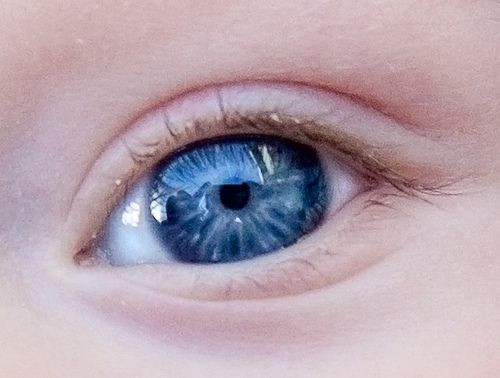DNA Test Can Reveal Hair, Eye Color of Humans Living 800 Years Ago

Scientists reported that a new genetic test can reveal the hair and eye color of humans based on DNA left as long as 800 years ago. The technique may have diverse applications, ranging from crime fighting to simply answering questions about the appearance of human ancestors.
As the Agence France Presse reports, the system is called the HIrisPlex. Based on a tool developed two years ago, the tool looks at 24 tiny variations in the genetic code and converts them into probabilities about hair and eye color. LiveScience reveals that the system can predict brown or blue eye colors with about 94 percent accuracy. With hair color, the system is slightly more fallible; it can predict blond hair with 69.5 percent accuracy, brown hair with 78.5 percent accuracy, red hair with 80 percent accuracy and black hair with 87.5 percent accuracy. It can be used on teeth and bones, as well, which survive longer than soft tissue, which is why archaeologists are particularly interested in the system.
"This system can be used to solve historical controversies where colour photographs or other records are missing," study author Wojciech Branicki said to AFP.
The study used the system on the remains of various humans. The first test was on General Wladyslaw Sikorski, who led Poland's exiled government in the United Kingdom during World War II. He died in a plane crash before the war ended and no color photographs of him exist. His body was exhumed twice, once in 1991 and most recently in 2008, in order to verify a theory that he had been murdered. Using a tooth, the system revealed with 99-percent accuracy that Sikorski had blue eyes and said with 85 percent accuracy that he had blond hair. The findings were consistent with contemporary descriptions and posthumous paintings.
Another experiment took DNA from skulls of 12 prisoners who were killed in Nazi-occupied Poland in 1942. The skulls, whose identity has never been known, were presented in Vienna's Natural History Museum as examples of "sub-humans". The system found that the prisoners had blue or brown eyes and hair ranging from light brown to blond, consistent with Polish history.
Reaching further into history, a mysterious female skeleton was found in the crypt of an abbey, where the remains of only male monks were expected. She lived between the 12th and 14th centuries A.D. The system found that she had brown eyes and dark blond or brown hair.
In the future, HIrixPlex may expand its tools to use more than 24 variations in the genetic code. Branicki said that they believe that as many as 127 genes may be involved in human pigmentation. However, he also said that they believe that all the main genes have been identified, so breakthroughs in the near-future are unlikely.
The study was published in the journal Investigative Genetics.
Published by Medicaldaily.com



























